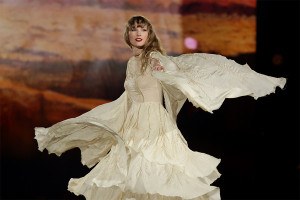O Festival Diary—Day IV, Part I: Sondra Radvanovsky in Recital
Between September 14th and 25th, Opera Philadelphia will boldly go where few, if any, companies have gone before—a festival that brings seven events covering the broad spectrum of opera, and in some cases pushing it into the future. There are traditional works (Mozart’s Die Zauberflöte at the Academy), new voices (We Shall Not Be Moved, which adds hip hop and spoken-word to the mix), big stars (reigning Met diva Sondra Radvanovsky in concert), and unusual venues (including the Philadelphia Museum of Art and the Barnes). I’ll do my best to cover as many of these events as I can. You can also find more information about the O Festival on their website.
A recital is not an opera, but let’s not get too sniffy. O17 is wisely embracing a wide range of musical experiences, and even the Met does the occasional recital. More important, stars are and have always been a major component of opera, and recitals can be an avenue to bring in high-wattage glamour that might not otherwise be available.
Glamour is something Sondra Radvanovsky certainly provided. In two gowns—one midnight blue-and-black, the other green, each with dramatic jewelry to match—she looked every inch the gorgeous diva, but her friendly, even self-effacing manner (she apologized for relying on a music stand, but she’s in the midst of Norma rehearsals at the Met) instantly won over the audience. Anthony Manoli was her supportive pianist.
Better still, she sings like a diva. Radvanovsky’s sizable soprano is powerful throughout its considerable range (up to a high C here in “I Could Have Danced All Night,” one of her encores), with a distinctive, appealingly smoky coloration that is instantly recognizable—a star-sound, one could say. She has excellent dynamic control, and an instinct for shaping a line, particularly in 19th Century Italian music.
All of this was in evidence on Sunday afternoon, and made for a luscious listening experience—but a satisfying recital is something else. Good as much of the singing was, there was little differentiation among composers (here including Vivaldi, Bellini, Liszt, Barber, Giordano and more!), and not much made of the texts. Diction could be opaque, especially in English, which is Radvanovsky’s native language. Sometimes the voice itself was enough—thrilling to hear Strauss’s “Befreit” sound so Wagnerian. But more often, one wanted a more delicate touch, and a sense of connection with the words.
Radvanovsky was, in fact, at her considerable best in the operatic selections—a plaintive “La mamma morta” from Andrea Chenier, a work she’ll soon add to her repertoire; and especially Dvorak’s exquisite Song to the Moon from Rusalka, which was gloriously involved in every way—now that is what opera is all about!


